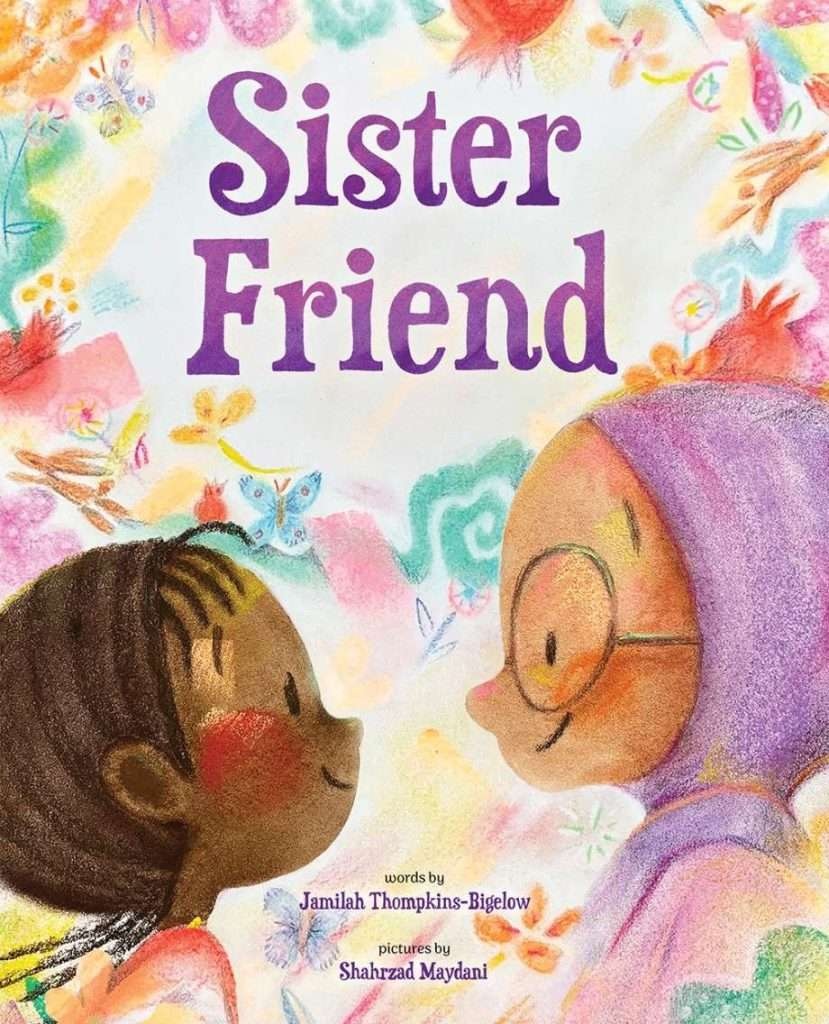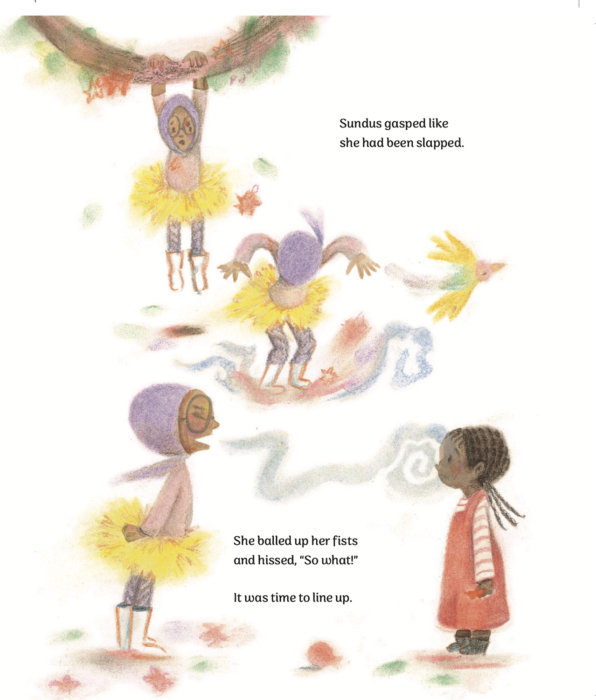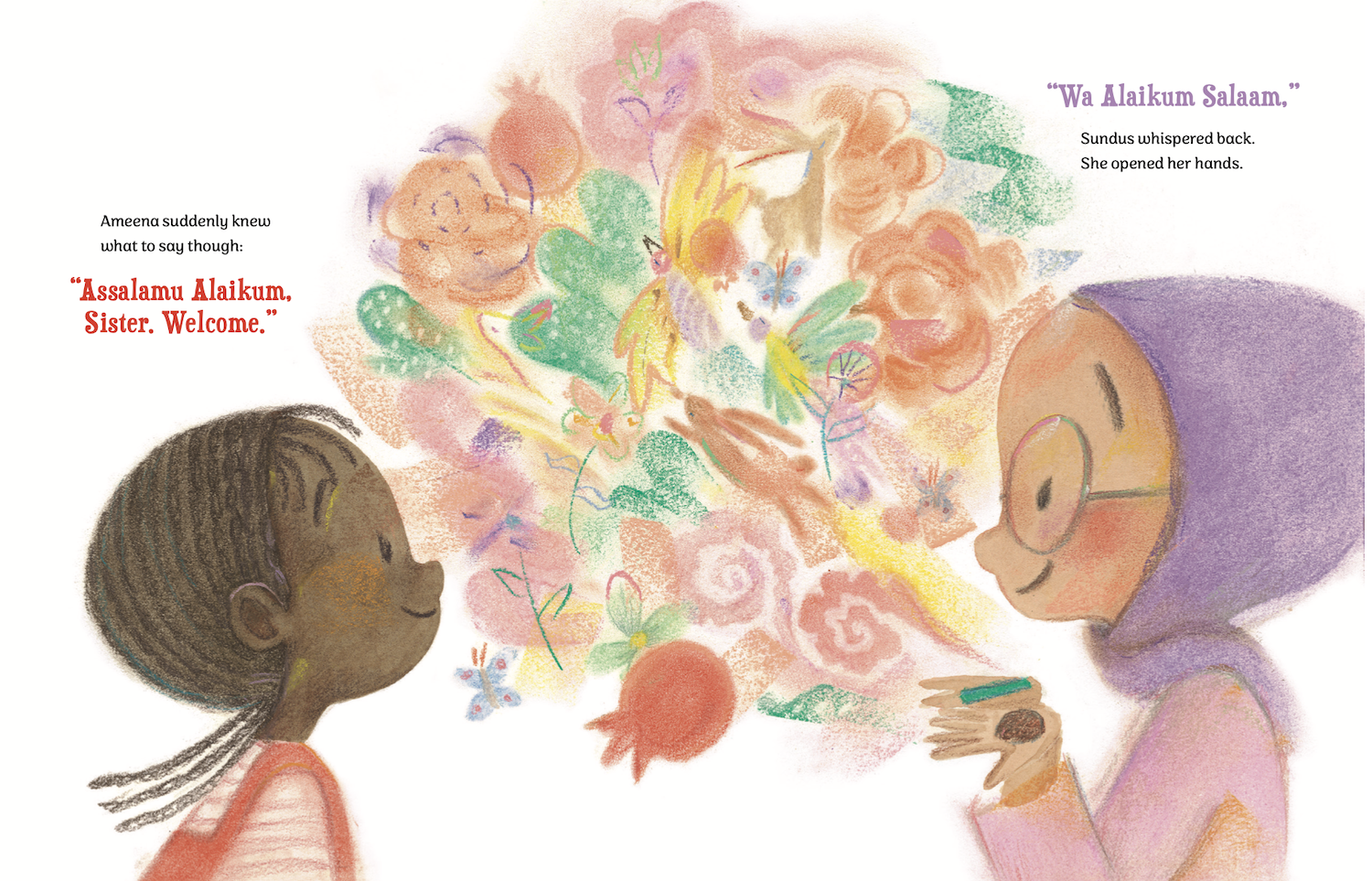
Abrams Books for Young Readers | 978-1419767210
“At Ameena’s school, it was always a play-by-herself day.
It had been so ever since she arrived a few months ago.
Kids had looked her up and down like she was something strange.”
Feeling out of place is an experience many of us have known at one time or another. Ameena, the main character of SISTER FRIEND felt this way, too. Why did the other children at her new school seem to ignore her? “Was it the twist in her hair? Her brown skin?” Ameena felt invisible. “No one looked her way. No one saw her. No one heard her.” At least that’s how it felt. And so, Ameena learned to take her sad feelings and stomp them away with her a “play-by-herself” game her mother had taught her.
Then a new girl, Sundus, arrived in her class. She wore a hijab, just like Ameena wore to masjid, the mosque. Ameena couldn’t help but be excited. The words spilled out. “YOU! You’re Muslim!” Sundus balled up her fists, and gasped, “So what!”
Even though Ameena’s intentions had been good, her words came out all twisted and Sundus had not understood that Ameena had only wanted to be her friend.

Later that week, at masjid, as the grownups listened to the iman, Ameena and her friends played. There, she saw Sundus hiding in a corner. Ameena waved, but Sundus frowned, eyes fixed on her shoes.
Ameena wondered why no one from school — including Sundus — would say hi to her.
The following day, Ammena decided what her next words to Sundus would be:

From that moment on, the old “play-alone” game became a “play together” game, perfect for two sister-friends.
This deeply moving story by Jamilah Thompkins-Bigelow, and Shahrzad Maydani celebrates the importance of finding a special friend who understands and appreciates you for who you are. Loosely based on the author’s experience of racism in first grade, she writes:
“One day, my teacher sent me to another classroom to give something to another teacher. In this class, the students were having free time and all the kids were talking except for one girl. I immediately noticed that she looked so lonely – just like me. And I suddenly understood that our loneliness was for the same reason. We both had hair with little braids and twists, and we both had dark skin when no one else in our classrooms did. I didn’t have the language to describe what that was, but I understood…
Sometimes when I visit schools, I see a lone non-white child in the class, and I wonder what their experience might be. I wonder if other kids might be urged to see how they make others feel invisible in their classrooms.”
By sharing SISTER FRIEND with the kids in our lives, I hope they’ll be encouraged to put themselves in the shoes of others and help them feel welcome.
- Enjoy this Classroom Activity Kit prepared by the publisher to accompany SISTER FRIEND.










